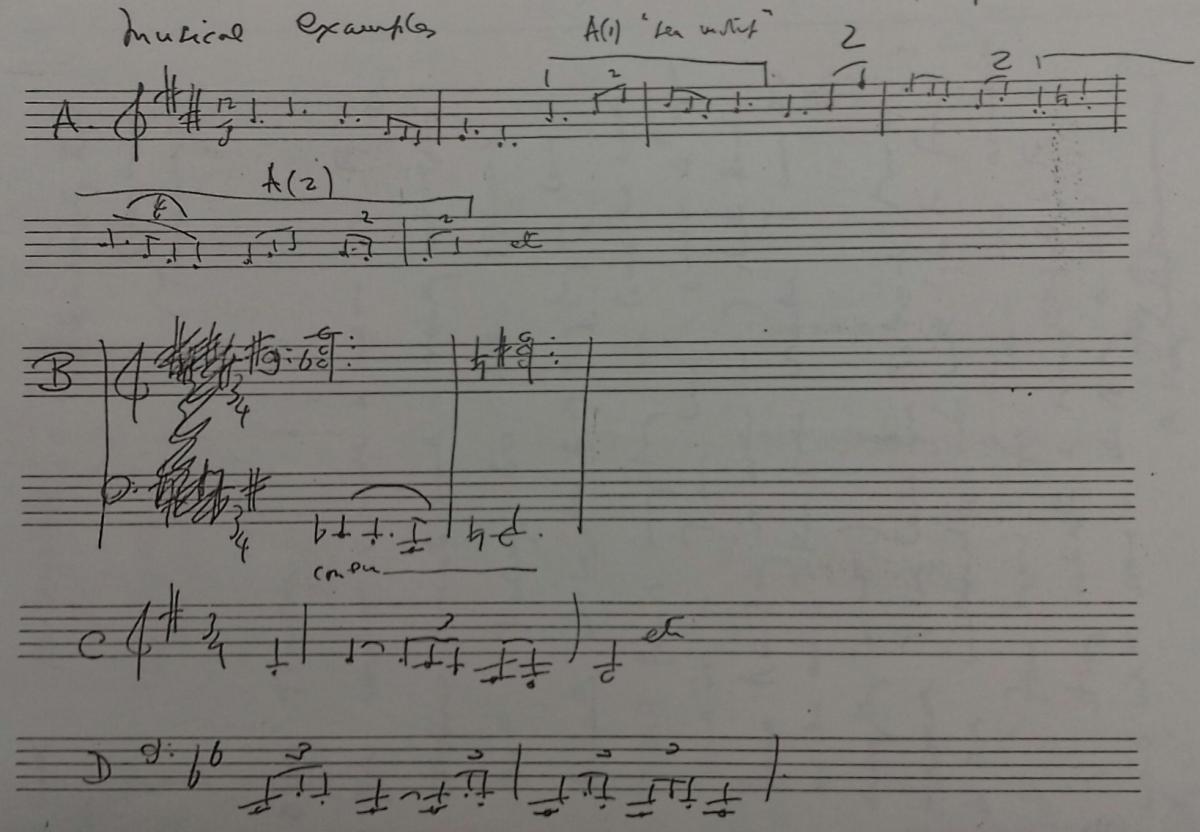Letter from Ralph Vaughan Williams to Herbert Thompson
Letter No. VWL332
Letter from Ralph Vaughan Williams to Herbert Thompson
Letter No.: VWL332
13 Cheyne Walk
S.W.
[About September 1910]
Dear Mr Thompson1
Many thanks for kindly sending me your M.S. – I have only one or two suggestions to make which you can adopt or not as you like.
p.3. Wd it not be better to quote more of the opening theme – which is the chief subject of the movement and point out that one phrase of it is afterwards used as the 2nd “sea motif”
(see musical example (A))
p.5. If you adopt above suggestion there is no need for your quotation 4 which is the opening phrase of the 1st subject.
p.7 There is no need for quotation no 8. or – if you keep it (as is perhaps better) point out that it is the 2nd section of the first subject (A (2)).
p.8. after “this phrase” add “which is heard in combination with No 3 (in the orchestra)”
p.9. after “the coda of this movement” add “which is built up on the 1st subject” or words to that effect.
Later, the verbal quotation shd be “one flag above all the rest”.
p.10. I think the opening phrase of the slow movement might be quoted – & point out that it is derived harmonically from the 1st “sea motif” (or whatever you call it)
(see musical example B)
p.11. Perhaps after quotation 12 you might print a few bars of the 1st subject proper of the movement (see example C.) and then go on “against this the baritone soloist has phrases more or less … etc”
Note also that the end of the movement is a nearly exact repetition of the 1st subject (with a slightly extended coda)
p.11. (continued) the likeness between No 13 & No 6 was quite accidental!
p.13. You might quote perhaps the “wavy” phrase (musical ex: D) which also comes in the 1st movement (p.8 etc).
This movement is more or less in “sonata form”: the 1st subject being your No 14 the 2nd subject is your No 16 (not a “trio” I think as you suggest).
The “working out” starts at letter N. (p. 68) & to recapitulation (much shortened) at p. 74 – but this is all quite unimportant.
p.19. No 21 is of course the same as No 19.
p. 22. It might be well to point out the “hornpipy” nature of No 27 suggesting the bustling busy effect of the words “cut the hawsers” “haul out” etc
Please don’t take these suggestions too seriously!
By the way I hope it will be possible to print the words of each movement on end and not interspersed between the analytical notes.
Yrs very truly
R. Vaughan Williams

1. Thompson was writing programme notes for The Sea Symphony – see VWL331.
-
To:
-
From:
-
Scribe:
-
Names:
-
Musical Works:
-
Format:
-
Location Of Original:
-
Shelfmark:MS. 361/327
-
Location Of Copy:
-
Shelfmark Copy:MS Mus. 1714/1/4, ff. 45-49


